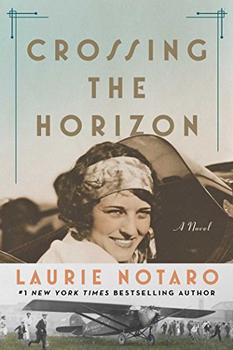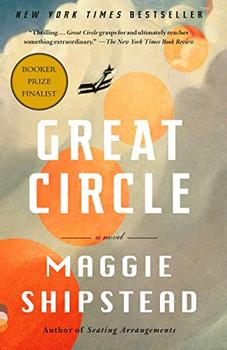Summary | Excerpt | Reading Guide | Reviews | Beyond the book | Read-Alikes | Genres & Themes | Author Bio

Soar back to the fearless 1920s with #1 New York Times bestselling writer Laurie Notaro - beloved author of The Idiot Girls' Action Adventure Club - in a stunning historical novel that tells the true, little-known story of three aviatrixes in a race to be the first woman to fly across the Atlantic.
Ten thousand feet in the sky, aviatrixes from London to Paris to New York - fueled by determination and courage - have their eyes on the century's biggest prize. The year is 1927, and Amelia Earhart has not yet made her record-breaking cross-Atlantic flight. Who will follow in Charles Lindbergh's footsteps and make her own history?
Three women's names are splashed daily across the front page: Elsie Mackay, daughter of an Earl, is the first Englishwoman to get her pilot's license. Mabel Boll, a glamorous society darling and former cigar girl, is ardent to make the historic flight. Beauty pageant contestant Ruth Elder uses her winnings for flying lessons and becomes the preeminent American girl of the sky.
Inspired by true events and real people, Notaro vividly evokes this exciting time as her determined heroines vie for the record. Through striking photos, meticulous research, and atmospheric prose, Notaro brings Elsie, Mabel, and Ruth to life, pulling us back in time as the pilots collide, struggle, and literally crash in the chase for fame and a place in aviation history.
Crossing the Horizon is an engaging and well-written novel about the early days of flight and three intrepid women who dared to be pioneers of this new form of travel. This highly satisfying account is sure to win Notaro many new fans and introduce readers to this fascinating and little-known aspect of history...continued
Full Review
 (833 words)
(833 words)
(Reviewed by Kim Kovacs).
In Crossing the Horizon, author Laurie Notaro highlights the lives of three women who dared to attempt flight across the Atlantic Ocean during the early days of air travel. They were not the only ones who defied expectation by taking such risks. The novel mentions three other women who also took on the daunting challenge of transatlantic flight:
Princess Anne of Lowenstein-Wertheim-Freudenberg (1864-1927) was born in London, the youngest daughter of John Savile, 4th Earl of Mexborough. At 33, she married Prince Ludwig of Lowenstein-Wertheim-Freudenberg (a province of the German Empire) in a lavish ceremony. Her husband disappeared from London mysteriously less than a year after they were wed, and only later did she learn he was killed in...

If you liked Crossing the Horizon, try these:

by Stephanie Dray
Published 2025
New York Times bestselling author Stephanie Dray returns with a captivating and dramatic new novel about an American heroine Frances Perkins.

by Maggie Shipstead
Published 2022
An unforgettable story of a daredevil female aviator determined to chart her own course in life, at any cost - Great Circle spans Prohibition-era Montana, the Pacific Northwest, Alaska, New Zealand, wartime London, and modern-day Los Angeles.